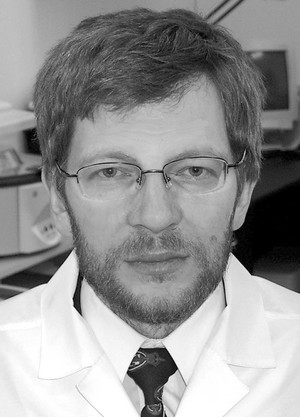New Approaches to brain damage diagnostics in athletes
Фотографии:
ˑ:
Teoriya i praktika fizicheskoy kultury №10 2016, pp. 45-47
UDC 796.01:61
Associate Professor, Dr.Med. V.V. Dorofeykov1
Professor, Dr.Hab. S.M. Ashkinazi1
Professor, Dr.Med. V.A. Bukharin1
PhD T.I. Oparina2
Associate Professor, Dr.Biol. A.N. Vetosh1
Professor, Dr.Med. S.Y. Kalishevich1
1Lesgaft National State University of Physical Education, Sport and Health, St. Petersburg
2Obstetrics, Gynaecology and Reproduction Research Institute n.a. D.O. Ott, St. Petersburg
e-mail: vdorofeykov@yandex.ru
Brain damage diagnostics and brain rehabilitation progress rating studies are ranked among the top priorities by modern sport medicine serving elite and youth sports. The authors offer a new approach to these problems based on their own study data on the brain, muscular and heart isoforms of creatine kenase using a set of computerized and standardized innovative biochemical and laboratory research methods, with due consideration for the available study data on the brain damage assessment biomarkers including neuron-specific enolase and protein S100. The new multi-marker laboratory strategy to measure the above biomarkers and trace variations in the athlete’s health will help assess the injury, success of the applied therapy and the rehabilitation progress on a timely and objective basis.
Keywords: brain damage, biomarkers, creatine kenase, neuron-specific enolase, protein S100.
References
- Dorofeykov V.V. Sovremennye laboratornye tekhnologii i risk serdechno-sosudistykh oslozhneniy (Modern laboratory technologies and risk of cardiovascular complications) / V.V. Dorofeykov // Translational Medicine / Ed. by E.V. Shlyakhto. – St. Petersburg, 2015. – P. 290–321.
- Dorofeykov V.V. Novye laboratornye tekhnologii v otsenke povrezhdeniya i peregruzki serdtsa u sportsmenov (New laboratory technologies to assess heart damage and overload in athletes) / V.V. Dorofeykov, E.N. Kuryanovich // Aktual'nye problemy fizicheskoy i spetsial'noy podgotovki silovykh struktur. – 2015. – № 3. – P. 38–45.
- Laboratornaya diagnostika mikropovrezhdeniy miokarda vo vremya koronarnoy ballonnoy angioplastiki so stentirovaniem (Laboratory diagnostics of cardiac micro-injuries during coronary balloon angioplasty and stenting) / V.V. Dorofeykov [et al.] // Klinicheskaya laboratornaya diagnostika. – 2011. – № 2. – P. 15–18.
- Laboratorny monitoring sostoyaniya organizma u sportsmenov (Laboratory monitoring of athlete's body condition) / Sergey Aleksandrovich Tsvetkov [et al.]; Lesgaft National State University of Physical Education, Sport and Health, St. Petersburg (NSU n.a. P.F. Lesgaft, St. Petersburg); State Research Institute of Socio-economic Problems and Health and Fitness Technologies (GNII SEP i SOT), St. Petersburg // Uch zapiski un-ta im. P.F. Lesgafta. – 2013. – № 6 (100). – P. 159–163.
- Sovremennye algoritmy otsenki prognoza u bol'nykh HSN (Modern prognosis estimation algorithms in patients with CHF) / E.V. Shlyakhto [et al.] // Serdechnaya nedostatochnost'. – 2009. – V. 10, № 1. – P. 4–7.
- The Prognostic Value of Serum Neuron-Specific Enolase in Traumatic Brain Injury: Systematic Review and Meta-Analysis / F. Cheng [et al.] // Ai J, ed. PLoS ONE. – 2014. – № 9 (9). – e106680.
- Trajectory Analysis of Serum Biomarker Concentrations Facilitates Outcome Prediction after Pediatric Traumatic and Hypoxemic Brain Injury / R.P. Berger [et al.] // Developmental Neuroscience. – 2011. – № 32 (5-6). – Р. 396–405.
Received 29.06.2016 г.




 Журнал "THEORY AND PRACTICE
Журнал "THEORY AND PRACTICE